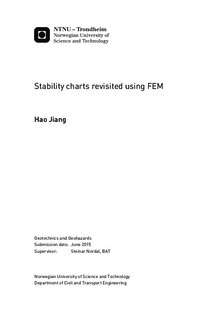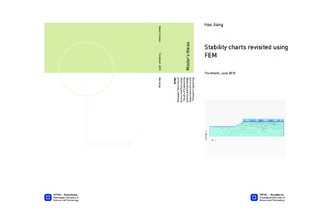| dc.description.abstract | The finite element method is a modern computer aided method developed in recent decades of years. While widely used Janbu stability charts theory is invented by hand calculation in 1954. The aim of this mater thesis is to revisit the Janbu stability chart by FEM Plaxis, especially is the basic parameters. After introducing limited method, especially Janbu stability charts theory, and Finite element method application in Plaxis, 1044 analysis units are designed to find proper simulation methods in Plaxis to achieve revisiting with single variation. A series of systematical tests are set up in stage of comparison on variation of slope angle β, variation depth D, comparison of different mesh size, evaluate effect of magnitude and length of distribution loading, partial submergence and drawdown condition and influence of tension cracks.
After analysis, the tendency of factor of safety varied by single factor is mostly same in Plaxis and Janbu stability chart analysis. The length upper surface and surcharge is unlimited in Janbu s assumption. But length of upper surface is better to bigger than 10 times as height of slope in Plaxis. And when length of surcharge is larger than 4, the factor of safety is tend to a stable value. The difference is mostly low than 8-10%. But with the influence of water, the difference will increase to 40-50%. It cites that water plays a key role in slope stability. | |

